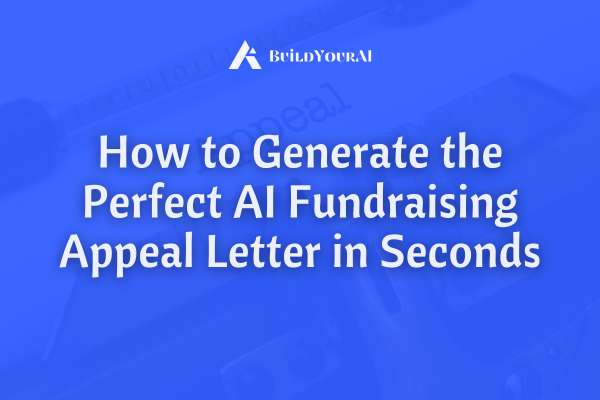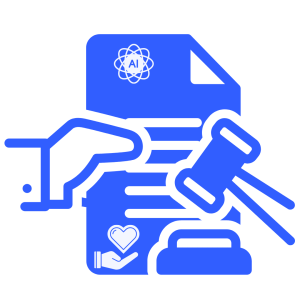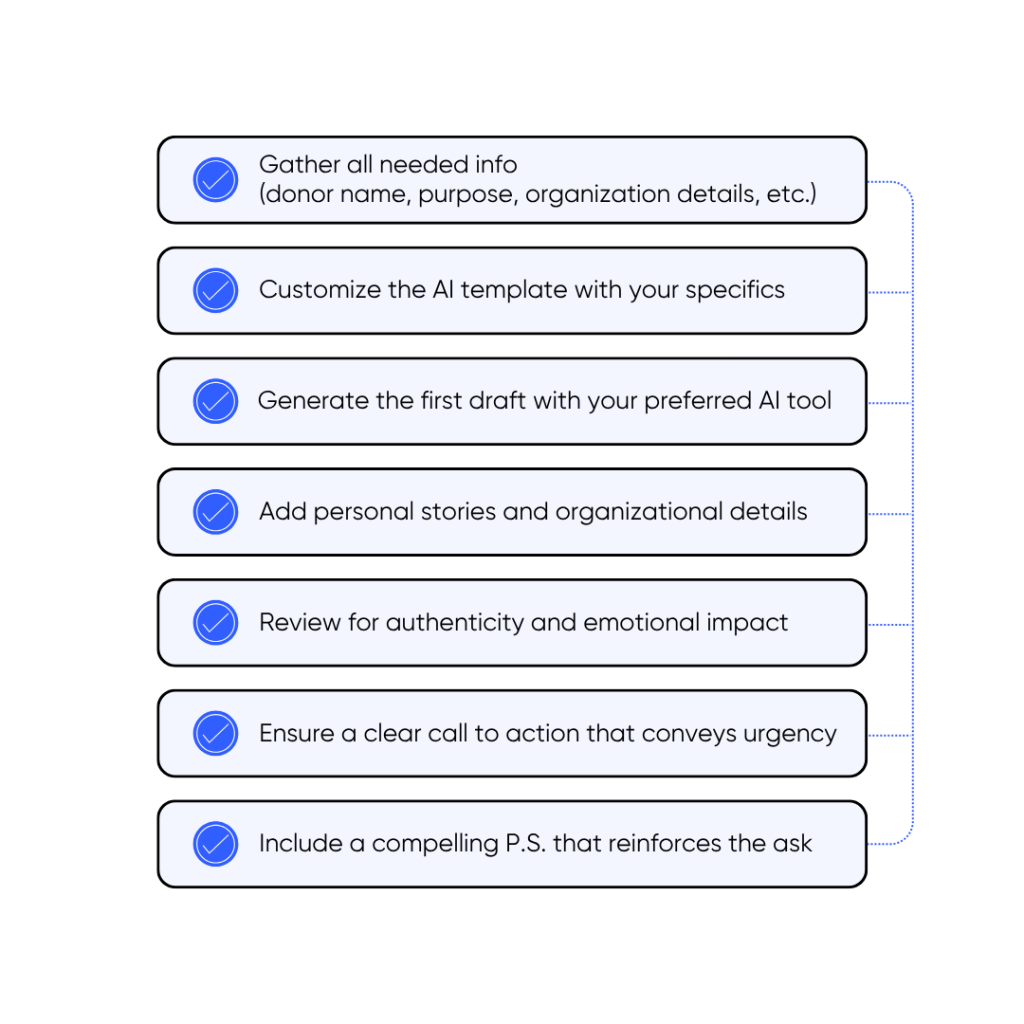
Blog
July, 29, 2025 • 3 min read
It’s a well-known fact that AI has changed the way nonprofits deal with marketing themselves. Take the fundraising appeal letter, for instance. What once took development teams hours or even days to craft can now be generated in mere seconds with AI agents.
If you want to make your nonprofit’s fundraising strategy a bit smoother, consider using an AI fundraising appeal letter template. We’re going to share how you can use AI to create heartfelt appeal letters that truly inspire donors to click that all-important “donate” button.
Why AI Agents for Drafting Appeal Letters?
So, writing effective appeal letters can be a challenge. Why’s that, you ask?
- These letters need to pull at the heartstrings while also hitting home with hard facts.
- They should sound like your unique organization, not like some robot churned it out.
But here’s the good news: AI can jump in to help you find creative ways to nail both of these things!
Tailoring Your AI Appeal Letter for Nonprofits

Okay, let’s break it down step by step so you can customize your AI-generated fundraising letters.
Step 1: Set the Stage for Your Fundraising Letter
First off, let’s get that fundraising message just right. It helps to tap into your past experiences to figure out what connects with donors on both emotional and financial fronts.
To make your message resonate, keep these essential pieces in mind:
- Donor Impact: Show how donors can be that steady support in these unpredictable times we’re navigating.
- Make Contributions Real: Add in some real data. This shows the contributions are real.
- Tell a Story: Instead of bombarding them with stats, use storytelling to illustrate transformation.
- Share Smart Giving Tips: Let them know about donating appreciated stocks or planning future gifts, which could really maximize their impact.
- Make It Personal: The letter should definitely feel like it’s coming from a trustworthy staff member who’s got a good grasp of the situation.
- Community Support: Remind them they’re not alone—let them see others stepping up, too, and invite them to join the cause.
Once you’ve laid all that groundwork, then it’s time to think about bringing AI into the mix.
Step 2: Feed AI Agents the Right Context
Now, you can’t just say, “Hey AI, write me a fundraising letter.” Nope! Instead, sprinkle in some rich background info to set the scene for optimal output. Think about including:
- A little bio about the staff member, highlighting their community ties to keep the voice genuine.
- Quotes from people who’ve benefited from your programs can serve as emotional touchpoints.
- A clear description of your audience—especially those donors who care about economic equity and job access.
- Key messaging points, themes, and goals that align with your organization’s vibe.
- A tone that’s warm and credible, yet stirs up some emotional urgency.
This process showcases the importance of expertise in fundraising; after all, the quality of the AI output depends on the quality of the input.
Step 3: Iterate Like You Would with a Junior Copywriter
When the first draft rolls in, it’s usually a solid start, but not quite there. The next step? Give it constructive feedback, just like you would with a human writer. Here are some specific tweaks to think about:
- Amp Up the Emotional Appeal: Make that opening grab attention. A hook like “Because of you, someone showed up today” can really resonate.
- Focus on ‘You’: Encourage the AI to use ‘you’ more often to center the donor in the story and highlight the difference they can make.
- Boost the Call to Action: Add some social proof language like, “Join your neighbors in helping [the organization’s] impactful programs,” and wrap it up with a motivating closing, such as, “You can give someone the chance they need most.”
- Highlight ROI: Share ROI insights and explain the perks of donating appreciated stocks for extra impact.
- Reinforce Stability: Experiment with phrasing to highlight the donor’s role in offering solid support during uncertain times.
Final Touches: A Letter That Hits the Mark
By the end of your iteration process, you want a letter that:
- Feels personal and authentic to your staff member’s voice.
- Is grounded in facts while reflecting your mission.
- Draws donors into the story right from the kick-off.
- Educates without overwhelming them.
- Balances emotional appeals with financial incentives.
- Comes together faster than a typical letter crafted from scratch.

Tips for Development Directors
Ultimately, this process is all about collaboration. AI isn’t here to write the letter for you, but rather to sharpen your thoughts and save some time while enhancing your messaging. Here are some quick tips for you:
- Do the Strategic Work First: You’ve got the inside scoop on your donors and what they care about. Just remember, AI is only as good as the strategy behind it.
- Use AI as a Helper: Don’t treat AI like a magic one-click solution. Like with a human writer, always give it a thorough edit before sending it out.
- Provide Rich Inputs: The more detail about audience, tone, and structure you give, the better the AI output will be.
- Keep Testing: Have fun experimenting with different openings, closings, and donor framing to discover what resonates best.
- Craft a Strong Call to Action: Make a clear ask that includes the reason behind it—like “We need your help because…”—to boost the chances of getting that donation.
By embracing AI in this way, nonprofits can create appeal letters that forge authentic connections with donors, inspiring them to become part of the organization’s mission. Get in touch with us to know more about how to create the ideal AI fundraising appeal letter for your cause.
